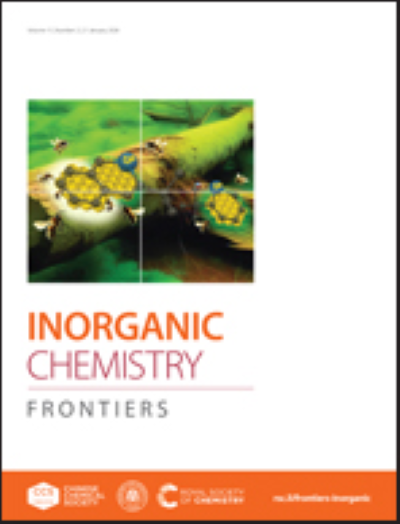双向热响应工程在第二生物窗口中的高灵敏度镧系元素比率纳米温度计
IF 6.1
1区 化学
Q1 CHEMISTRY, INORGANIC & NUCLEAR
引用次数: 0
摘要
近年来,掺杂镧系纳米温度计作为非接触式测温工具在生物领域的应用取得了重大进展。然而,在第二近红外(NIR-II)生物窗口中工作的高灵敏度纳米温度计取得了有限的成功,该窗口可以在微米级成像分辨率下实现亚中心组织穿透。在这里,我们采用核壳结构,通过NIR-II窗口中两个发射峰的双向热响应,开发了一个高灵敏度的镧系元素比例纳米热计。我们发现,在808 nm激发下,钕离子在1330 nm处的发射强度表现出淬灭效应,而铒离子在1565 nm处的发射强度在高温下表现出增强效应。这种相对的温度依赖性使纳米温度计在整个生理温度范围(30-45°C)内具有高于2.3%°C的相对灵敏度,最高可达2.5%°C。这种高灵敏度纳米温度计能够可靠地区分正常和炎症小鼠的温差,突出了其在体内应用的前景。本文章由计算机程序翻译,如有差异,请以英文原文为准。
High-sensitivity lanthanide ratiometric nanothermometer in the second biological window through bidirectional thermal response engineering
In recent years, lanthanide-doped nanothermometers have made significant progress as non-contact temperature sensing tools in a variety of biological fields. However, limited sucesses has been met in high-sensitivity nanothermometers operating in the second near-infrared (NIR-II) biological window, which can enable sub-centermiter tissue penetration at micrometer-level imaging resolutions. Here, we adopted a core-shell struture to develop a high-sensitivity lanthanide ratiometetric nanothermormeter through bidirectional thermal response of two emissions peak in the NIR-II window. We show that, under 808 nm exciation, the emission intensity at 1330 nm from neodymium ions exhibits a quenching effect, while the one at 1565 nm from erbium ions shows an enhancement at elevated temperatures. This contrasted temeparture dependency endows the nanothermometer to have a high relative sensitivity above 2.3 %°C⁻¹ , with a mxium of 2.5% °C⁻¹, throughout the entire physiological temperature range (30-45 °C). This high-sensitivity nanothermometer enables reliable differenatiaon of temperature differences in both normal and inflamed mice, highlighting its promising uses for in vivo appliations.
求助全文
通过发布文献求助,成功后即可免费获取论文全文。
去求助
来源期刊

Inorganic Chemistry Frontiers
CHEMISTRY, INORGANIC & NUCLEAR-
CiteScore
10.40
自引率
7.10%
发文量
587
审稿时长
1.2 months
期刊介绍:
The international, high quality journal for interdisciplinary research between inorganic chemistry and related subjects
 求助内容:
求助内容: 应助结果提醒方式:
应助结果提醒方式:


